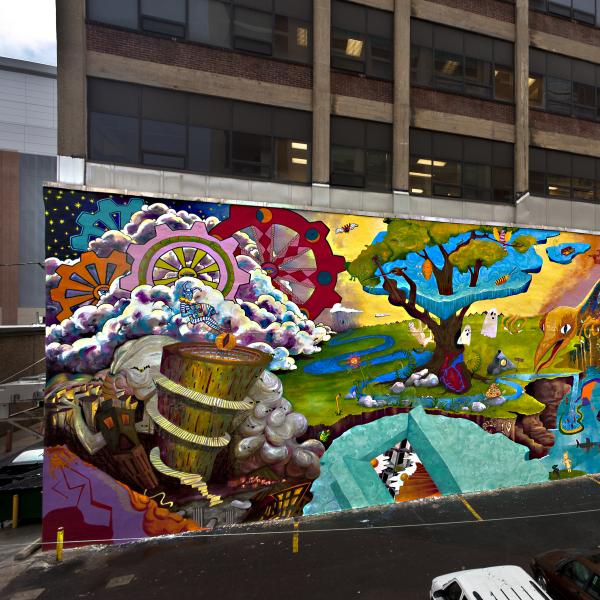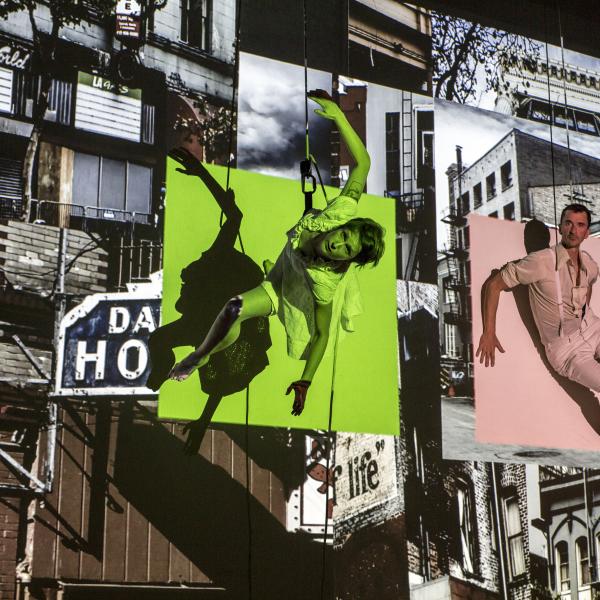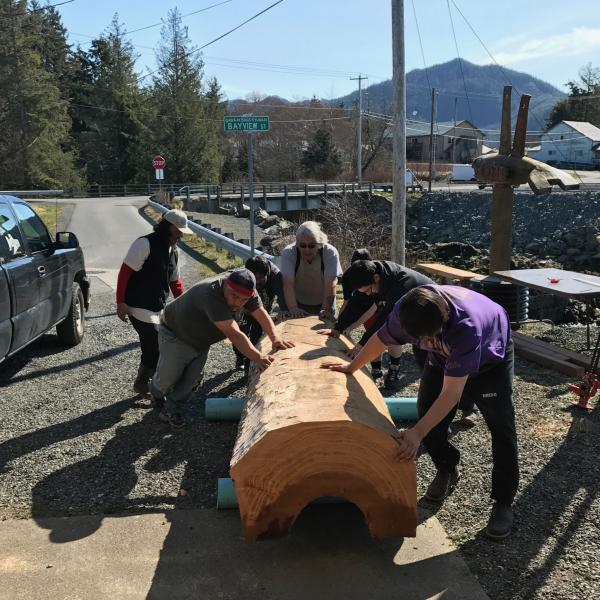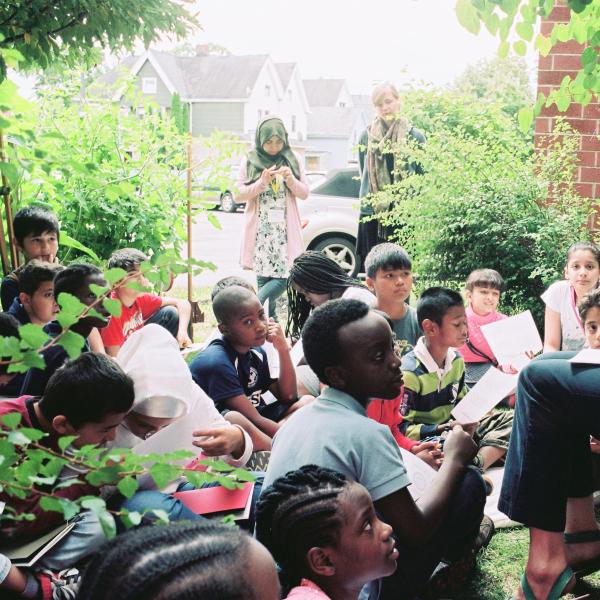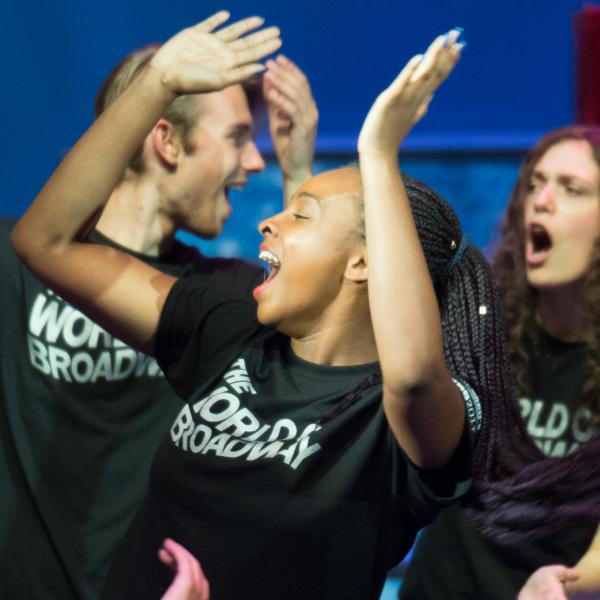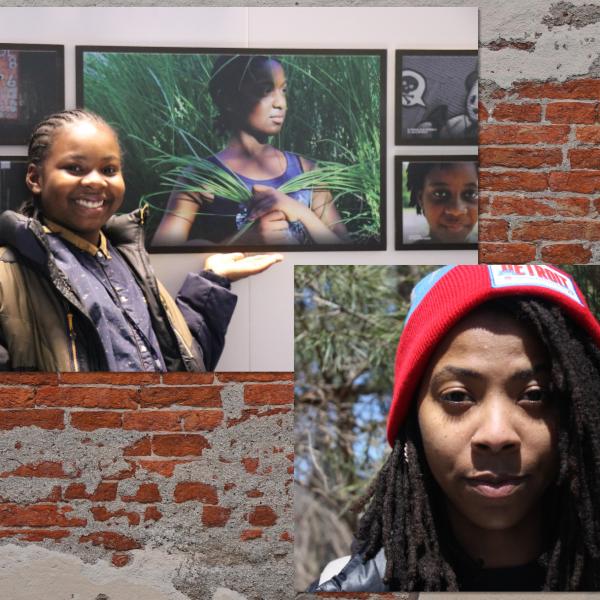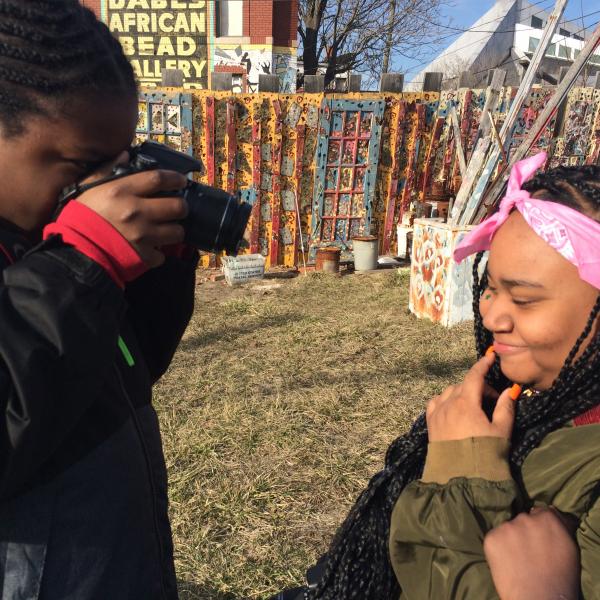Making Connections
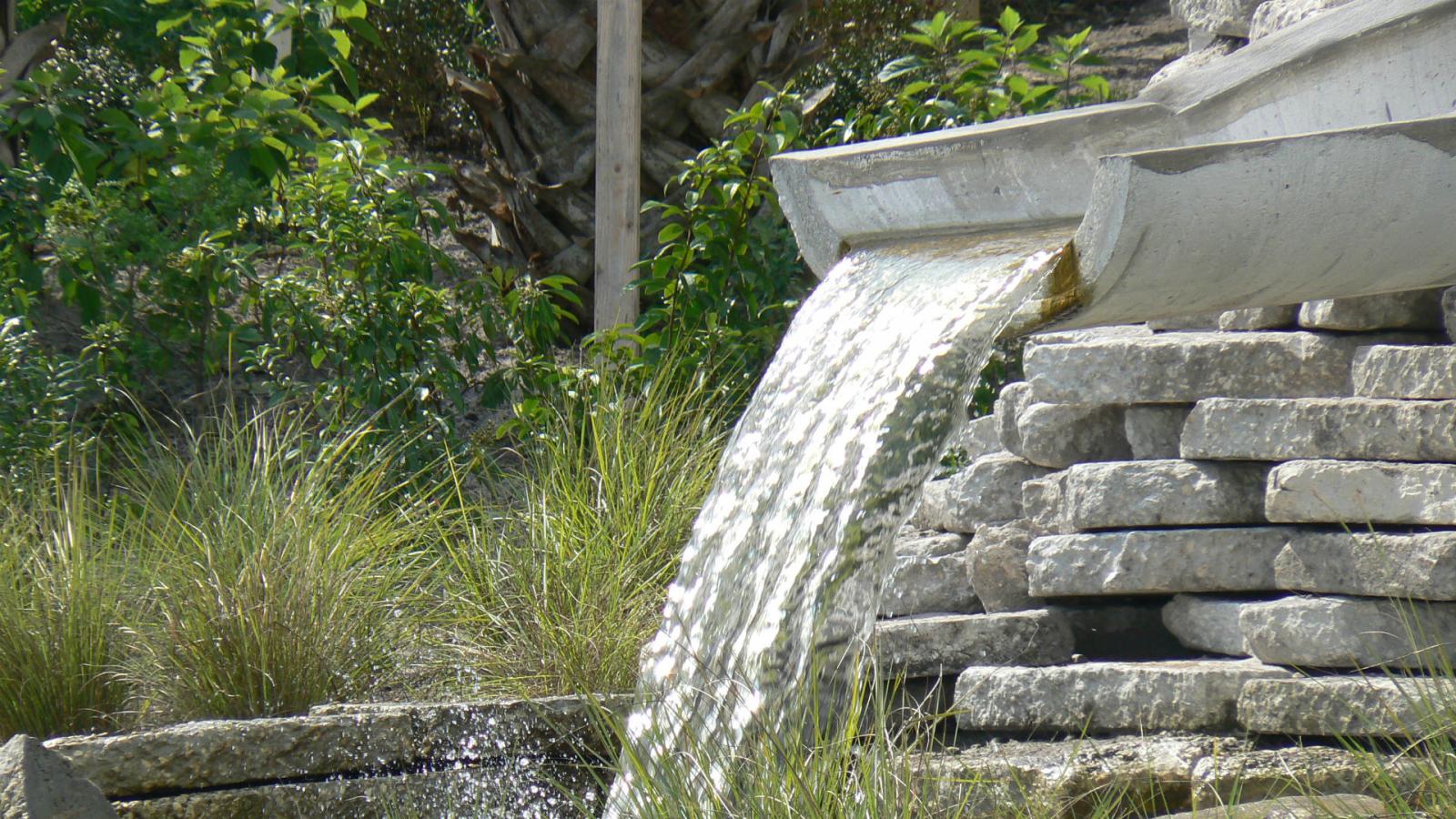
When a decision is made to create new public art in a community, it doesn’t happen overnight. The process from the beginning of the idea to the final mounting of the work often takes years, involving fundraising, community interaction, and working with various contractors and government agencies and officials. It requires serious time commitments for everyone involved: the artists, the government, private organizations, and community members.
Take the example of the Old Palm City neighborhood of Palm City, Florida, located on the banks of the St. Lucie River in Martin County. In the county’s Community Redevelopment Area Plan for Old Palm City, inadequate stormwater management was a key issue, impacting the quality of the water supply. The community’s location near the Florida Everglades provided an opportunity to not only address the stormwater management problem, but also to tie the project to the community’s relationship with the St. Lucie River and surrounding environs. Four neighborhood sites were cited as primary spots to treat the stormwater drainage. This was the beginning of the project known as Ripple.
“The location of the project is right next to an estuary, which has much biodiversity but also is prone to flooding,” noted Susan Kores, manager of Martin County’s office of community development, which oversees Ripple. By adding an artistic element to specific engineering necessities, the project has engaged the community as part of the solution, soliciting input on how the project is done and how it looks. The idea is to use attractive landscaping and green infrastructure, as well as public art such as sculptures and murals that reflect the community and environment. Eventually, the project will transform the stormwater treatment area into an aesthetically pleasing public space, one that is poised to become an integral part of community life. In addition to project funding from Martin County, the county was awarded two National Endowment for the Arts Our Town grants to implement the artistic component of the project.
|
|
In 2014, Martin County and the Arts Council of Martin County (another partner in the project), with input from the community, selected environmental artist Lucy Keshavarz to work on the Ripple project. “[She] is definitely the leader of the project,” Kores said, noting the unique occurrence of having an artist rather than a civil engineer lead an ecological/engineering project. “She truly understands the logistical side and the artistic side. Lucy is married to an engineer, so she really understands the engineering aspect and its function as well as being an artist. She’s done other projects like this before, so that also plays into her total conception of how the project should work and what it should look like.”
The founder of Art & Culture Group, an arts consulting company, Keshavarz specializes in arts projects that reflect the needs of the community, such as Babbling Brook in Palm Beach County, Florida. That project increases water quality by circulating stormwater from the Central Lake across the street through the brook structure as it snakes along the detention basin and returns the water back into the lake. The remaining portion of the area is landscaped with more than 70 species of native Florida plants that provide food and shelter for migrating birds.
Keshavarz began the Old Palm City project by visiting the neighborhood and meeting with residents to discuss her approach. She sees community engagement gatherings as a crucial component for the success of the project. “When Ripple is built,” she said, “the community will have an aesthetically pleasing stormwater treatment area that they have had a hand in creating—this sense of empowerment for the community will be grand.”
On the logistical side, Keshavarz worked with Martin County to interview engineering and architectural firms to work on the project. Giangrande Engineering was selected as the design firm and Chen Moore & Associates was selected as the landscape architecture company.
The initial phase of the project, which was supported by the first NEA Our Town grant, involved preliminary planning, coordinating various county agencies involved in the project, hiring contractors, and developing conceptual plans. Keshavarz noted that she takes her artistic inspiration from the community’s story rather than forcing her ideas onto the community. “It’s about the needs of the project, not about my art,” said Keshavarz. “I hold back on any art-related concepts until I have the feel and story of the people and place the work will integrate with. I call this ‘embracing the unknown.’ For a project like Ripple, community engagement is so important in taking me from the unknowing to the knowing.”
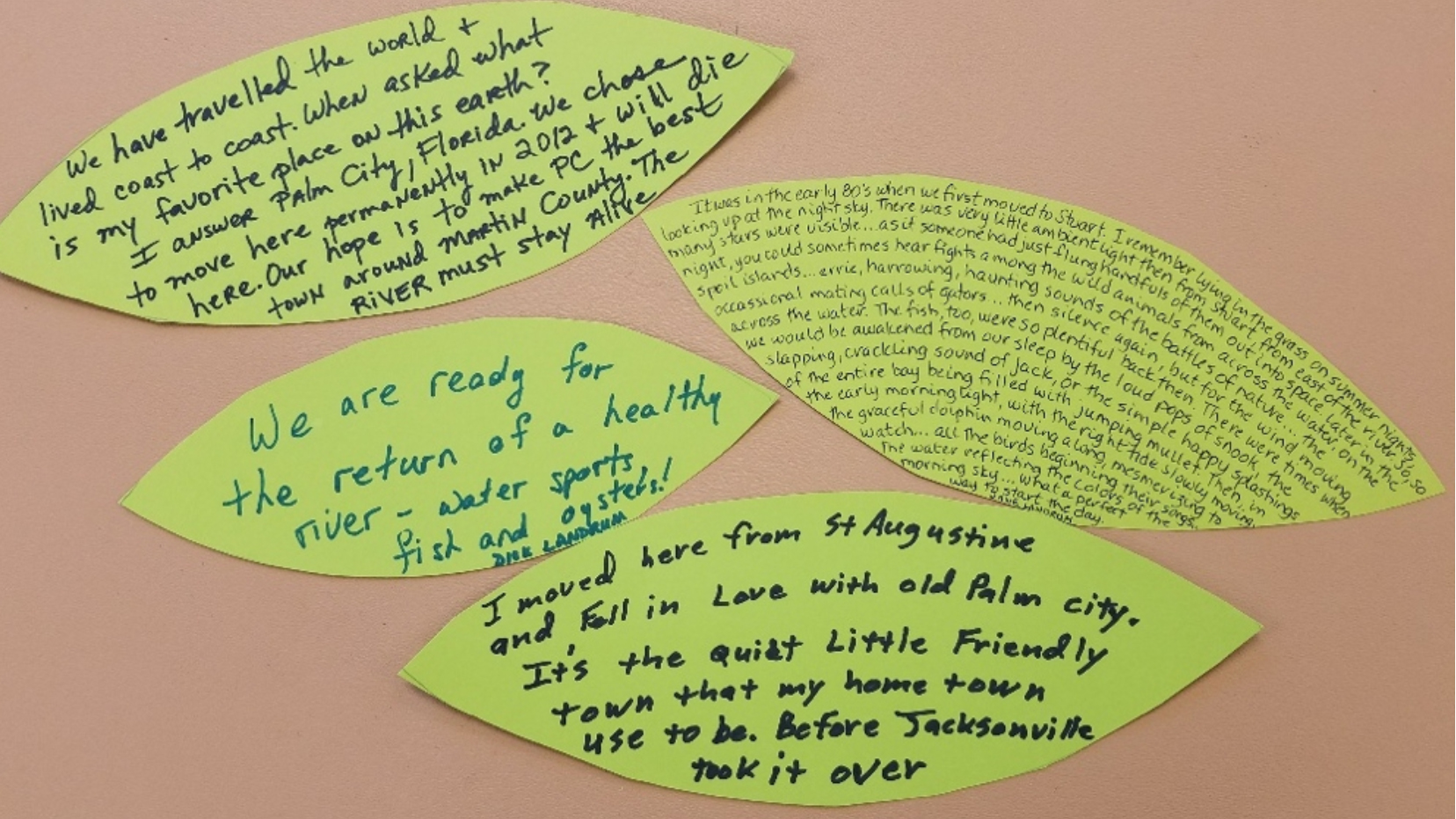
|
Engaging with the community involved many meetings, including a community potluck to talk about the project in a less formal setting, as well as community charrettes, or workshops, to gather information, questions, and suggestions regarding the proposed project. Keshavarz even created a “community tree” as a vehicle to gather information. She provided prompts for Old Palm City residents to respond to in order to learn more about how they thought about their neighborhood. Residents could then write their responses on leaf-shaped pieces of paper and attach them to the community tree. The information gathered from these community gatherings was then synthesized to build conceptual design drafts, which married artistic proposals with environmental protection, all tying back to the community’s connection to the river.
The conceptual designs will be reviewed by the community before they are finalized, but Keshavarz suggested that “some of the ideas are to create walking trails within the stormwater infrastructure…and to integrate interpretive messaging in the art forms and functional amenities that speak to the history, environment, and sustainable efforts unique to Old Palm City. ”
The second phase of the project, supported by a second NEA Our Town grant, will focus on additional community engagement to finalize the plans, as well as on the development of an implementation plan for completing the construction of the project. Since it is about halfway through the process, it could be another few years before the public art project is completed.
The important thing is the involvement of the community every step of the way—after all, they are ones who will be living with the final result long after the artists and contractors leave. “My big-picture philosophy is about facilitating connections: our human species connections to each other and to our natural environment. With eco-art projects such as Ripple, I am illuminating connections that bring solutions for a particular community and place, and then documenting this through the art form as a result of the process.”
Angela Koerner was an intern in the NEA Office of Public Affairs in 2018.


